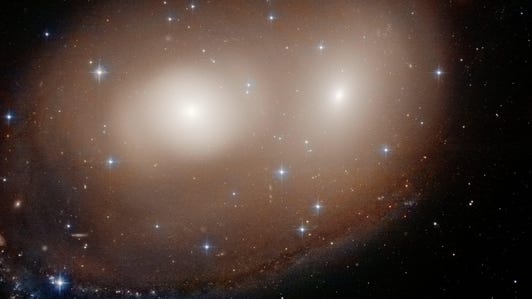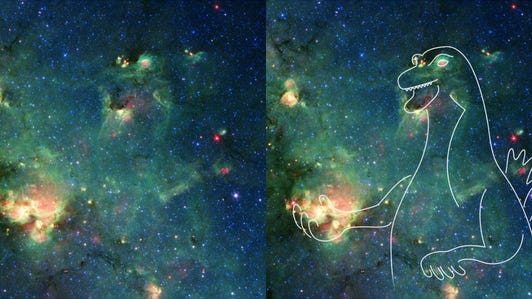Good news, Earthlings. We have more to look forward to than just the drab landscape of the moon or the inhospitable surface of Mars when it comes to far-flung future human civilizations off this rock. We might one day be living la vida asteroid.
Yes, space-faring piles of rocky rubble (like famous asteroid Bennu) could be home sweet home. A group of scientists at the University of Rochester in New York worked out a plan for turning asteroids into spinning space cities with artificial gravity. The researchers published a “wildly theoretical” study in Frontiers in Astronomy and Space Sciences earlier this year.
“Our paper lives on the edge of science and science fiction,” said co-author Adam Frank in a University of Rochester statement last week. Frank is a professor of physics and astronomy at the school.
Asteroid Bennu is a good example of a “rubble pile” made up of rock fragments and debris. NASA’s Osiris-Rex mission studied this asteroid.
NASA/Goddard/University of ArizonaThe basic concept behind the asteroid city builds on an idea called the O’Neill cylinder, a rotating space colony design proposed by physicist Gerard O’Neill in the 1970s. The rotation creates artificial gravity. Think of something along the lines of the cylindrical Cooper Station in the movie Interstellar. It’s a fascinating idea, but it would be difficult and expensive to transport enough material into space to make a large-scale O’Neill cylinder.
This is where things get wilder. The Rochester research team proposes a way to turn a rock pile of an asteroid into a cylinder by surrounding it with a thin, high-strength mesh bag made from carbon nanofibers. It would have an accordion-like design.
“A cylindrical containment bag constructed from carbon nanotubes would be extremely light relative to the mass of the asteroid rubble and the habitat, yet strong enough to hold everything together,” said study co-author Peter Miklavcic, a doctoral candidate in mechanical engineering.
Spinning an asteroid would cause its rubble to break apart, expanding the bag and creating a layer of rock against it. That layer would provide radiation shielding for a colony inside the cylinder while the continued spin would create artificial gravity.
It sounds far-fetched, but Frank said the technologies and engineering behind the asteroid city technically obey the laws of physics. “Based on our calculations, a 300-meter-diameter asteroid just a few football fields across could be expanded into a cylindrical space habitat with about 22 square miles of living area,” Frank said. “That’s roughly the size of Manhattan.”
Of course, bagging and spinning an asteroid wouldn’t be simple. The researchers suggest using solar-powered rubble cannons to get the spin going. There’s also the matter of constructing a human-safe colony on the interior, but we can leave those challenges for the future.
Sci-fi writers have long envisioned life on asteroids. The paper provides a new way of thinking through that possibility in a way that could protect human occupants and make them feel more at home. It’s a good companion piece to another recent space thought experiment that offered up a plan for building a “forest bubble” on Mars.
My imagination is now taking me from my cozy quarters inside an asteroid to a vacation destination in a Martian nature reserve. This may not be relegated to the realm of sci-fi forever. “Space cities might seem like a fantasy now,” Frank said, “but history shows that a century or so of technological progress can make impossible things possible.”




